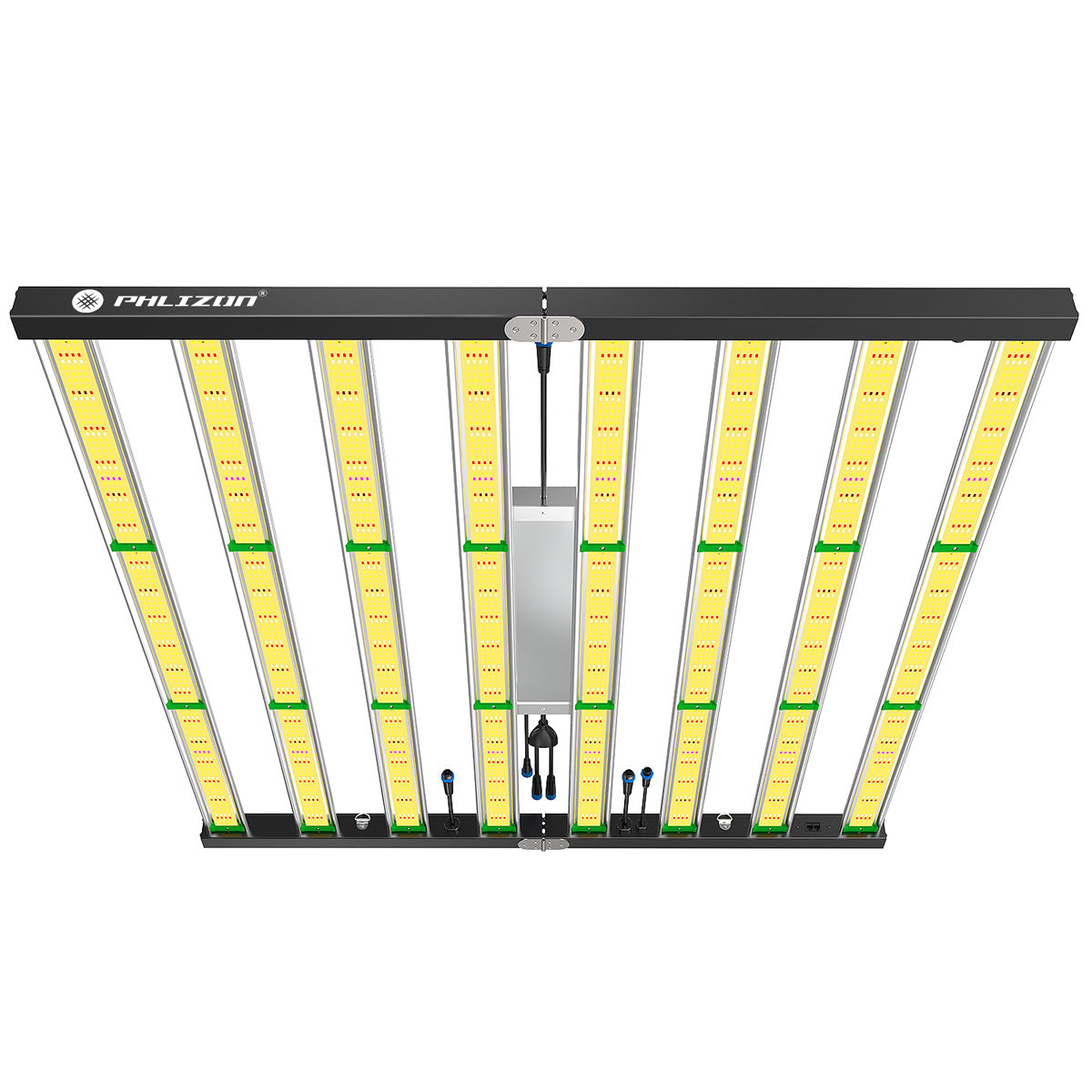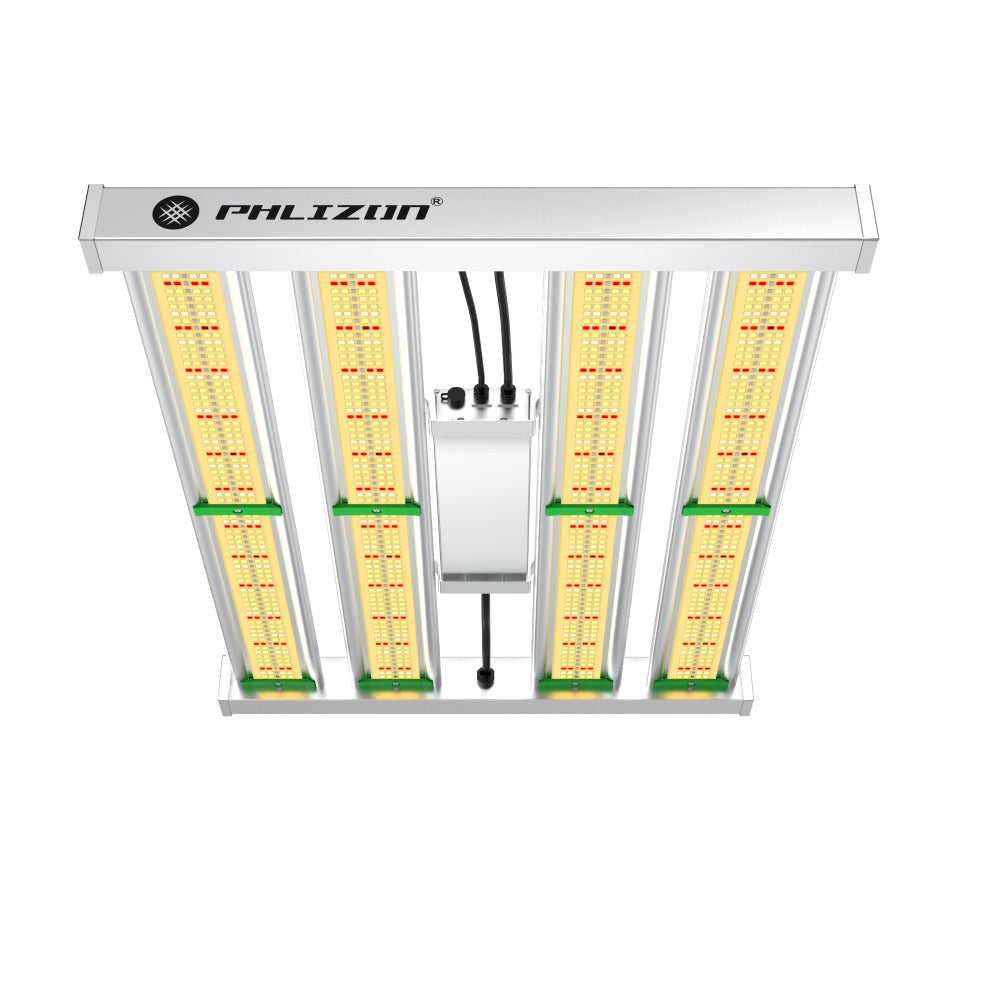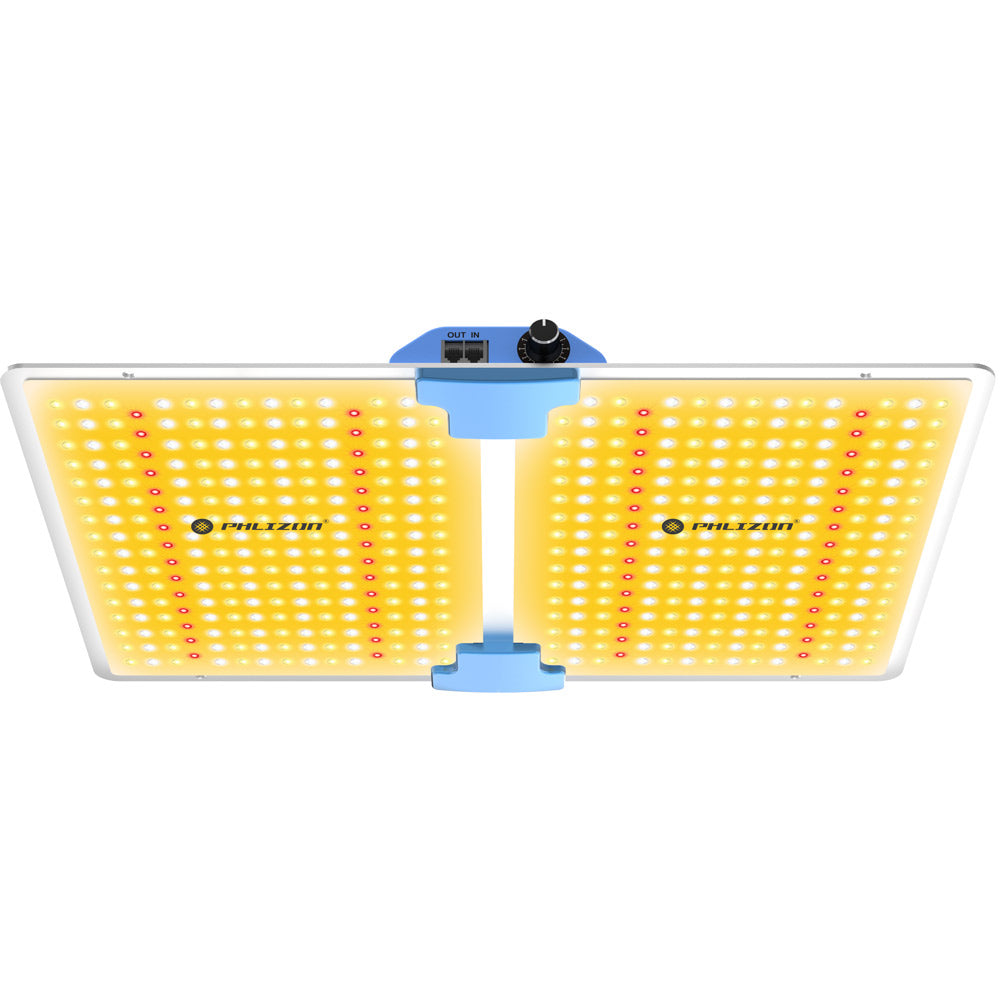Menu
Can White LED Lights Grow Plants?
Lighting plays a crucial role in the growth of plants. For years, traditional incandescent light bulbs were used to provide the essential lighting needed for photosynthesis and other plant-growth-related functions. But, with the advent of LED technology, there is now an alternative option. Can this new technological advancement actually help grow plants? The answer may surprise you! In this article, we explain what white LED lights are, their potential benefits for growing plants, and how they compare to traditional bulbs when it comes to providing adequate lighting for healthy plant development.
What Are White LED Lights?
White LED lights are an artificial light source that emits a broad spectrum of visible light when electrically stimulated. White LEDs typically use a combination of red, green and blue chips to produce different tones, while some utilize phosphors to create a “warm white” effect. This makes white LED lights ideal for providing adequate illumination while minimizing energy consumption when compared to other types of lighting options like incandescent or halogen bulbs. White LED lights provide full-spectrum coverage which means they offer a wide range of wavelengths from ultraviolet to infrared. This allows them to mimic natural sunlight more accurately than other types of lighting including those with only blue or green components.
Blue wavelengths are often associated with promoting leafy green growth in plants. However, yellow light is needed too if you want your plants to grow large flowers or fruit. Combined together, blue and yellow create a more complete spectrum of ‘grow light’ which provides an ideal balance of light for plants. White LEDs consist of both blue spectrums as well as yellow ones, meaning that compared to other forms of lighting, they offer a wider spectrum that allows for better overall plant health.
The Science Behind Plant Growth and Light
Before we dive into the specifics of different light spectra, it's essential to understand the science behind light and plant growth. Plants rely on the process of photosynthesis to convert light energy into chemical energy (in the form of glucose) and oxygen that fuels the plant growth. Photosynthesis primarily occurs in specialized cell structures called chloroplasts, where pigments, such as chlorophyll, capture light energy. However, not all wavelengths of light are created equal when it comes to photosynthesis. Certain spectra are more effective in driving this essential process, and understanding them is vital for optimal plant growth.
Plants require specific wavelengths of light for photosynthesis. Plants absorb wavelengths of light in the same range as the visible spectrum between 400nm (blue) to 700nm (green). The proportion of each color can determine the plant shape. White LEDs provide a balance of blue, green and red for healthy growth. Red light, with wavelengths ranging from approximately 600 to 700 nanometers, is a critical component for plant growth. Red photons are the most photosynthetically efficient of all and therefore indoor growers want to maximise the amount of red in the grow light spectrum. Red will be about 30 - 40% of any white led spectrum output.
Can White LED Lights Actually Grow Plants?
The burning question on everyone's mind is, can white LED lights actually support plant growth? The short answer is yes, but it's not that simple. White LED lights can facilitate plant growth, but their effectiveness largely depends on other factors such as light intensity, distance from the plant, and duration of exposure. However, for optimal results, full-spectrum LED grow lights that emulate natural sunlight are generally preferred.
Yes, plants can definitely grow and thrive under LED lights. Since LED lighting is relatively new, people have a lot of questions about how effective it is for plant growth. Scientists and plant biologists agree that LED lighting is one of the best artificial lighting options available. Plants of all kinds, including vegetables, flowers, and herbs, respond well to LED lighting during all phases of growth, from the seedling stage to maturity. You can use regular LEDs but you’ll get better results with LED grow lights. LED bulbs and strips usually produce white light, which is helpful for general plant growth.
A study at Chiba University measured the effects of supplemental lighting with LEDs on tomato yield, which included white LEDs. Based on the unit photons emitted, the white LEDs showed as high efficiency as the red LEDs in increasing tomato yield, followed by the blue ones. This is quite an interesting result because not many grow lights include white spectrum, although some of the higher end models have started to include it. The study found that tomato yields increased 12 to 16% when white LED lights were included with a mix of red and blue lights to grow tomatoes. Even though the red and blue lights contributed to the result, the study’s authors concluded that “The results were probably due to the white LEDs that contained more than 50% of green light characterized by high penetration into the canopy.”
Advantages of White LED Lights for Plants
White LED lights are known for their versatility. They are good for vegetative growth as well as flowering. However, for plants that require specific light conditions, white LEDs might not be the most effective choice. These are the closest to mimicking natural sunlight, and they support all stages of plant growth. Full-spectrum LEDs are the best choice for those who want a one-size-fits-all solution.
LEDs emit high quality lighting that plants thrive in. "Light quality" refers to the color of light. Because LED lighting comes in a wide range of colors, it can mimic sunlight more accurately than other artificial lights. You can also adjust the color to enhance growth during specific stages, which may result in bigger and healthier plants. NASA has been studying LED lighting for years. In many studies, plants grew taller and faster under LEDs than other types of artificial light.
Part of the desire to compare white LED lighting for plant growth came from their low energy use and ability to stay in use for longer periods of time safely. If you use LED lights to grow plants, you will not have to purchase equipment for ventilation due to the reduced temperature. The cooler temperatures also mean the plants will not dry out as quickly. Traditional high intensity bulb lamps are not as effective because they use more energy and the light released is lower quality. The use of high intensity bulbs for growing can create a hot environment that’s hard to control. This has often been a significant complaint from indoor plant growers.
Limitations of White LED Lights
While white LED lights have many advantages, they are not without their downsides. Much of the light produced by "white" LEDs are in spectra (colors) that plants do not use. This unused light is just converted to heat within the leaves, requiring lower environmental temperatures to maintain optimal leaf surface temperatures. When combined with the 20%-40% efficiency loss, "full spectrum" white LEDs are less than half as efficient for growing plants than the correct mix of pure-color LEDs—white LED grow lights force you to cool your growing environment more, just like HPS and MH, losing a lot of the other advantages LEDs offer.
On the other hand, a white LED grow light lacks some very essential parts of the light spectrum, including UV (ultraviolet) and IR (infrared), as well as far red. Ultraviolet and infrared are outside the visible range and do not exist in white light. The role of UV diodes is to enhance the production of resin to form more trichomes. This results in healthier plants with better flavor, aroma, and potency. Meanwhile, infrared assists in flowering and stem strength. These are both missing factors in white LED light, meaning that the LEDs cannot offer plants these useful wavelengths of the light spectrum. The plants will, therefore, produce fewer trichomes and be less potent, aromatic, and lack flavor.
White LEDs only produce 40% of usable light and the rest is wasted in power consumption and heat. While white LEDs can provide good response and growing power in very young/immature plants, the most efficient, powerful way to fully grow plants is to tailor the spectral output of an LED grow light to the Absorption spectrum by use of narrow banded LEDs in a perfected balance. White LEDs by nature are inefficient and wasteful when used as the primary source of light in an LED grow light.
How to Use White LED Lights Effectively
Understanding the basics of setup can make a world of difference in the effectiveness of your white LED lights for plant growth. The right grow light distance and positioning can drastically impact how well your plants grow. Too close can cause light burn, while too far away won't provide enough light. Understanding the light cycle that your specific plants need is crucial for successful growth. This varies from plant to plant and also depends on the plant growth stage.
Plan on keeping your LED light on for at least 14-16 hours per day. Keep them on a timer if possible to make sure they get the same amount of light every day. Use a bulb with a Kelvin temperature of at least 5,000 when you are starting with seeds because they need the maximum amount of light during that state in their development. Then, when the plants are fully developed and begin to flower you can switch the bulbs to the lower the temperature of about 2700 Kelvin. Every plant will require different types and amount of light. Some do better in colder and less sunny areas than others. Plants that will produce fruits and vegetables will likely need more light than a succulent for example.
Conclusion
To sum it all up, white LED lights can indeed facilitate plant growth. They offer a versatile and energy-efficient solution that can be tailored to meet your specific needs. However, for the best results, understanding your plant's specific light requirements and setting up your system accordingly is crucial. White LED lights are great for growing plants. Find out more about how they can benefit your indoor garden.
Plants need light for photosynthesis which is how plants turn light into food or sugars. Humans eat food and convert that energy into cell growth. We often hear the term “you are what you eat”. Well, for plants the type of light also will determine the amount of growth and the quality of growth that a plant will experience. By providing the right balance of light to your plants you can ensure healthy, vibrant, and productive indoor gardens. Fortunately white LEDs with added 660nm deep reds provide a good balance of Blue, Green and Red for both short and dense growth and maximum photosynthetic efficiency.
Frequently Asked Questions (FAQ)
1. Are white LED lights as effective as specialized grow lights?
White LED lights can grow plants, but they’re not as efficient as specialized grow lights. Grow lights are designed to emit specific wavelengths, like red and blue, that plants use most effectively for photosynthesis. White LEDs include a broader spectrum, including green light that plants don’t absorb as well, which can reduce their overall efficiency.
2. What types of plants can I grow with white LED lights?
You can grow a wide variety of plants with white LED lights, including leafy greens, herbs, and some flowering plants. However, plants with specific needs—like orchids or cannabis—might benefit more from tailored grow lights that provide higher intensities of red or blue light at certain growth stages.
3. How long should I leave white LED lights on for my plants?
Most plants thrive with 14-16 hours of light per day, though this depends on the species and growth stage. Seedlings might need more light, while flowering plants might do better with a 12-hour cycle. Use a timer to keep it consistent.
4. Can I use regular household white LED bulbs for growing plants?
Yes, you can use household white LED bulbs, especially if they’re bright (high lumens) and have a color temperature between 5000K-6500K for vegetative growth. However, they won’t be as effective as grow lights for flowering or fruiting due to the lack of targeted wavelengths.
5. Do white LED lights get too hot for plants?
No, one of the perks of LEDs is they produce very little heat compared to incandescent or HID bulbs. Still, keep them at least 6-12 inches from your plants to avoid any risk of light burn from intensity, not heat.
6. What’s the best color temperature for white LED lights?
For starting seeds or vegetative growth, aim for cooler tones like 5000K-6500K, which have more blue light. For flowering or fruiting, warmer tones around 2700K-3500K with more red light are better. A mix of both can work if you’re covering all stages.
7. Will white LED lights save me money compared to grow lights?
White LEDs are often cheaper upfront and use less energy than traditional grow lights like HPS. However, if you’re aiming for maximum yield or specific plant traits, investing in grow lights might save you time and effort in the long run.
Featured blog
- Choosing a selection results in a full page refresh.

















